| Type |
Single seat fighter |
| Engine |
1 Hispano-Suiza 12Ycrs |
| Dimensions |
Length 8,50 m , height 2,60 m , span 10,85 m , wing area 17,00 m2 , |
| Weights |
Empty 1690 kg, loaded 2200 kg , max. take off weight |
| Performance |
Max.. speed 495 km/h , cruising speed , range 500 km, endurance , service ceiling , climb 13,0 m/sec. |
| Armament |
|
| Type |
Werk.Nr |
Registration |
History |
| 35/3 |
|
D-IPBB |
Displayed at the Salon de l'Aéronautique in Brussels |
| 35/2 |
|
|
With minor modifications the second prototype, the B-35/2, was put into further testing, which was interrupted during the German invasion, and continued under German markings, ending with an accident in May 1940 |
The Avia B.35 (RLM designation Av-35) was a fighter aircraft built in Czechoslovakia shortly before World War II. It was designed to meet a 1935 requirement by the Czechoslovakian Air Force for a replacement for their B-534 fighter biplanes. The B.35 was an elegant, low-wing monoplane with an elliptical wing. The fuselage was constructed from welded steel tube, covered in metal ahead of the cockpit and fabric aft, while the wing was of entirely wooden construction. Rather anachronistically, the Air Force specified a fixed tailwheel undercarriage for the aircraft, in the hope that this would speed development, as the mechanism for retracting the undercarriage was simply not yet available
The first prototype, the B-35/1 displayed excellent flying characteristics and high speed and was originally powered by a Hispano-Suiza 12Ydrs piston engine. The powerplant was later changed to a 12Ycrs with an identical power output, but with provision for an autocannon to be fitted between the cylinder banks to fire through the propeller hub. Testing continued until 22 November 1938, when the aircraft was destroyed in a crash that killed Avia test pilot Arnošt Kavalec. Nevertheless, a second prototype, B-35/2, was already reaching completion, and was fitted with redesigned ailerons and flaps. It first flew on 30 December with testing beginning in earnest in February 1939. A pre-production series of ten aircraft was ordered, but before these could be built, Czechoslovakia was occupied by Germany in March 1939.
Development however was resumed under German control, with the substantially revised B.35/3 flying in August 1939. The elliptical leading edges of the wings had been replaced with straight ones, and an outwardly-retracting main undercarriage was fitted. This prototype was the first to actually carry its intended armament. Now, wearing German markings and the registration D-IPBB, it was displayed at the Salon de l'Aéronautique in Brussels, where enough interest was generated to spur development of an improved version of the aircraft as the B.135.
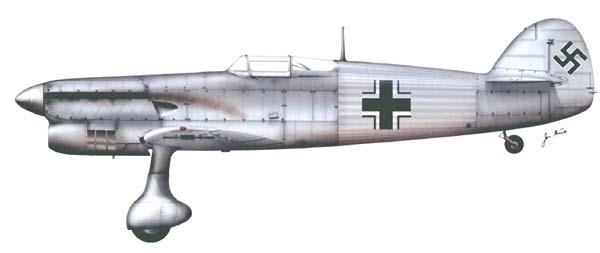
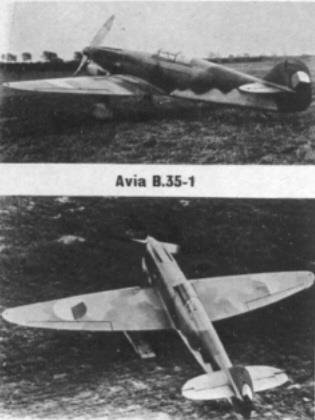
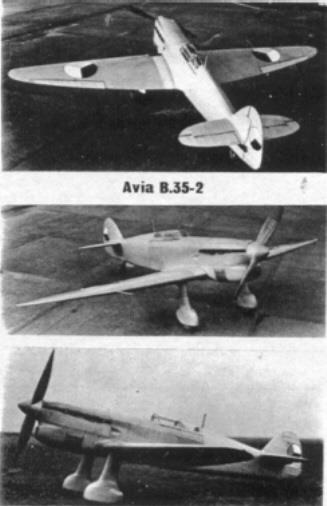
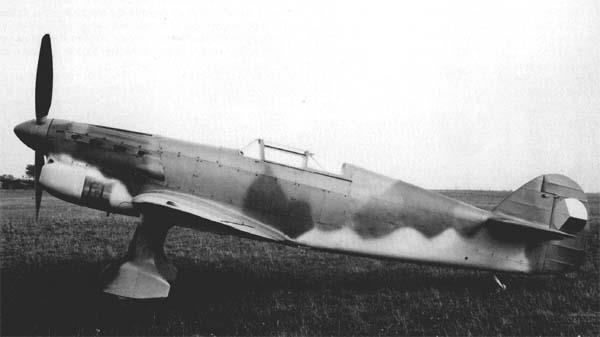
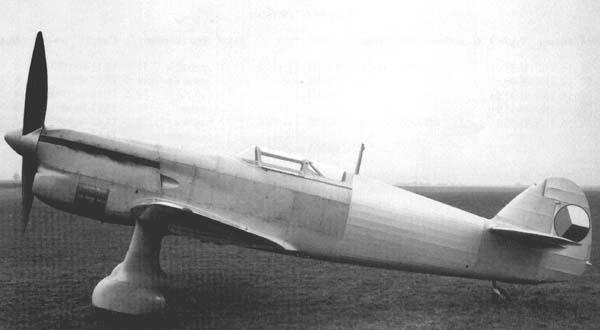
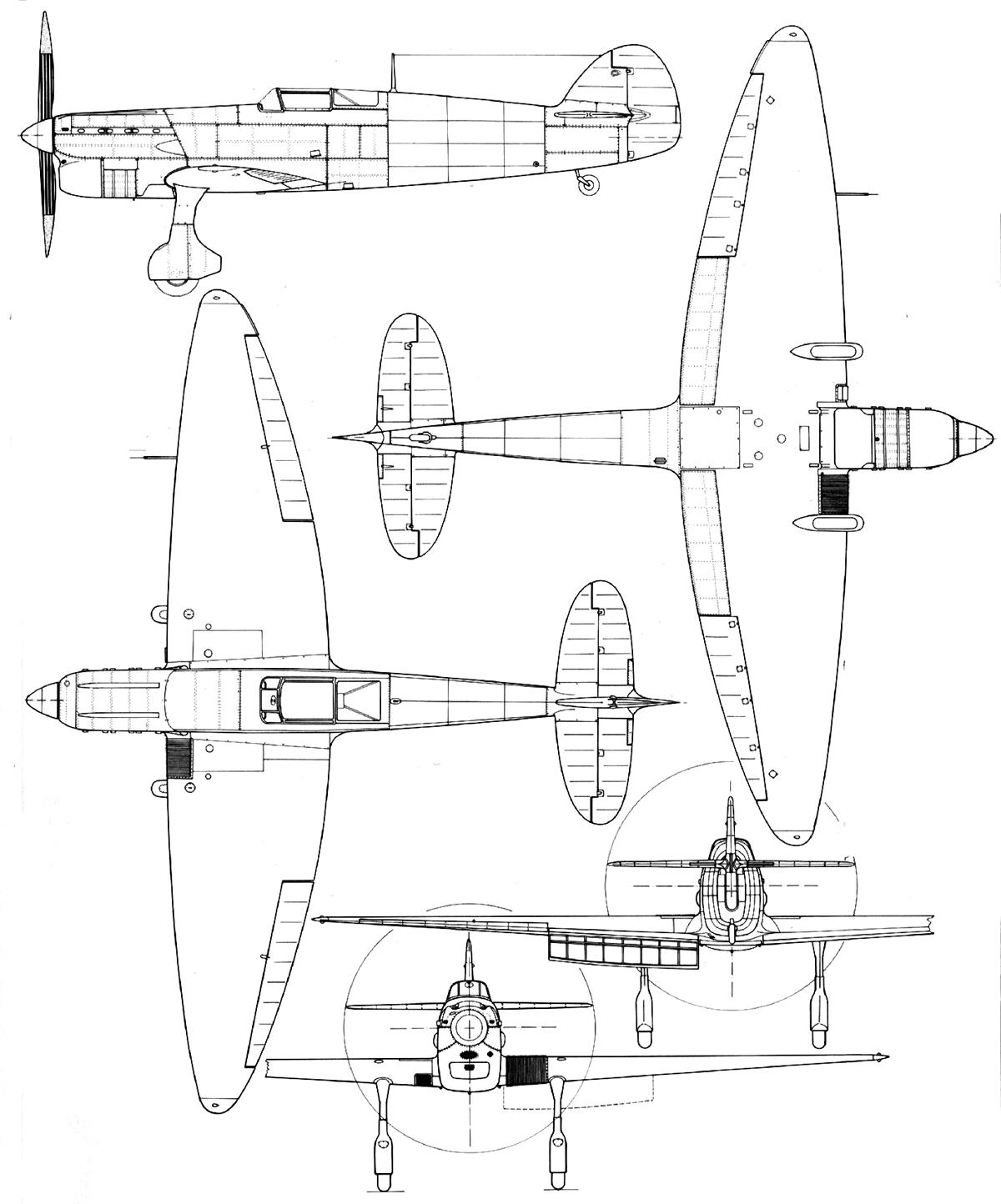
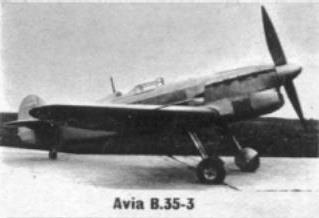
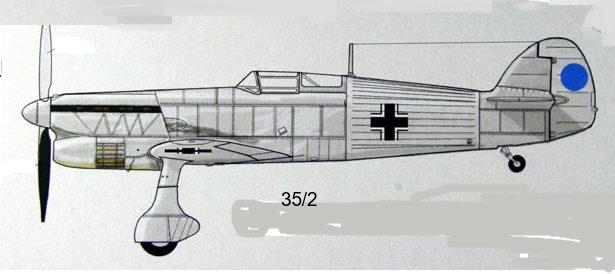
This article is from Flying Review International April 1968
Designed by Frantisek Novotny as a successor to the Avia B.534 single-seat fighter biplane, the Avia B.35-3 single-seat fighter monoplane, which formed a part of the exhibit of the "German Protectorate"at the Salon de l’Aéronotique held in the Palais du Centenaire, Brussels, in July 1939. was the third and definitive prototype for the Avia B.135 fighter, and had not flown when exhibited at the Salon.
Ing Novotny had initiated design of the B.35 in 1937. at which time it was envisaged that the fighter would be powered by an Avia licence-built version of the Hispano-Suiza 12Y-37 with an anticipated international rating of 1,000 hp. When the development contract for the fighter was placed with the Cakovice factory early in 1938, it was obvious that this power plant would not be available for installation until mid-1939, and it was decided to instal a standard B.534 engine in the first prototype, the B.35-l, this being a supercharged Hispano-Suiza I 2Ydrs 12-cylinder liquid-cooled engine with a normal sea level rating of 650 hp and 850 hp available for 30 min at 3 lOOm. From the outset it had been planned to incorporate fully-retractable main undercarriage members, but in order to hasten flight testing. this feature was relinquished for the prototype which, when flown for the first time in the late summer of 1938, was fitted with close-cowled fixed cantilever main undercarriage members.
The B.35-l had provision for two 7.72-mm Type 30 machine guns in the upper decking of the nose, and was of mixed construction, the elliptical wing having a wooden structure with plywood skinning and an outer covering of light alloy, and the fuselage being a welded steel-tube structure with light alloy panneling forward and fabric covering aft. All movable surfaces were fabric-covered, and the airscrew was of two-bladed, fixed-pitch type. Wing span and overall length were l0.25m and 8,5 m respectively, empty and loaded weights being 1 690 kg and 2 200 kg. and performance including maximum and cruising speeds of 495 km/h and 435 km/h, initial climb rate being 13 m/sec and service ceiling being 8 500 m. During a high-speed run over a measured 3-km course in November 1938, the B.35-l exceeded estimated maximum speed, but its pilot, Kovale, unused to flying a relatively highly loaded monoplane, put the prototype into a steep turn at low altitude at the end of the high speed run, lost lift and crashed, losing his life.
Work had begun on two further prototypes in the meantime and the first of these, the B.35-2, incorporating modifications resulting from experience with the first prototype, flew in February 1939. Retaining the fixed undercarriage of its predecessor, the B.35-2 differed primarily in having larger flaps and smaller ailerons. overall wing span being increased to 10.85 m The third prototype, the B.35-3. was the first aircraft to incorporate a retractable undercarriage, the main members folding outward into wing wells. Apart from the changes to the wing structure dictated by the well cut-outs, the B.35-3 was similar to the earlier prototypes but had provision for an engine-mounted 20-mm Hispano cannon. In March 1939, while the B.35-3 was still under construction, the Republic of Czechoslovakia had been dissolved by Germany, Slovakia declared an independent State. Bohemia and Moravia becoming protectorates. Nevertheless, earlier plans to exhibit the fighter at the Brussels Salon were fulfilled, and after its return to Cakovice, the B.35-3 began its flight test programme in August1939.







